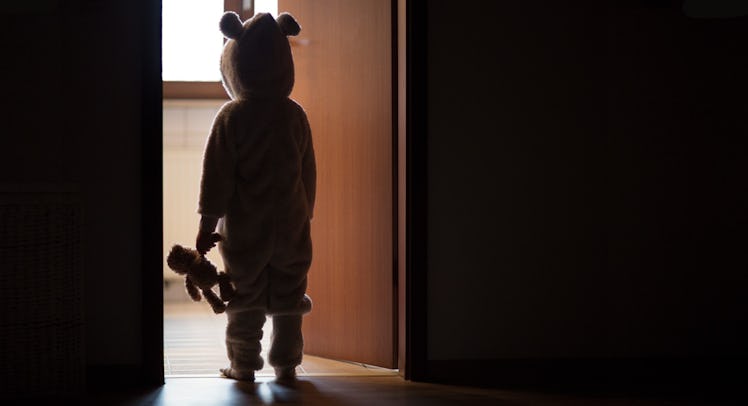What To Do About Kids Who Sleepwalk
Sleepwalking kids are unsettling, but shouldn't be alarming to parents. Here's what to do.

Sleepwalking is strange when anyone does it, but sleepwalking in kids can be especially alarming. Walking around, talking, and acting active and awake, when they’re very much asleep, sleepwalking children essentially seem haunted. But as creepy as sleepwalking seems, it’s common throughout childhood and rarely escalates to a sleep disorder that parents have to worry about.
Anywhere from 1% to 15% percent of the population sleepwalks, but it is far more common among kids. Rates of sleepwalking in children may be as high as 40%, and 2% to 3% of children sleepwalk more than once a month, according to the Sleep Foundation. Most of those children affected are between the ages of 3 and 7. On top of sleep-talking and sleepwalking, these kids are more likely to suffer from bedwetting and night terrors as well. Their parents may not be getting much rest, but all hope is not lost.
What Causes Childhood Sleepwalking?
Sleepwalking is not a disease or a disorder — it’s a habit that parents need to help kids break. And it’s easier to prevent than you might think. The key to stopping sleep walking in kids? A good night’s sleep in the first place.
“Sleepwalking is a type of abnormal behavior that occurs during sleep,” says Kristy Sileo, a certified sleep consultant. “Behavior is the key word, as it is not a disorder that needs medication, but something that can be modified with proper intervention. Being overtired or a lack of adequate sleep causes almost all forms of parasomnia, including sleepwalking. As such, the easiest and most effective treatment is to get your child more sleep, and preferably, more restorative sleep.”
How to Stop a Sleepwalking Child
Sileo suggests tweaking your child’s waking schedule, offering regular nap times, or moving their bedtime back to a more biologically appropriate time. Sleep hygiene should also be analyzed. “Does the child have a TV in their bedroom?” Sileo says. “What time are electronic devices turned off for the night? All of these things can be a factor in how restorative a child’s sleep is.”
These are preventative steps to keep sleepwalking at bay, but if you experience your sleepwalker in the act, do wake them. According to the National Sleep Foundation, it’s a common misconception that a sleepwalker should not be awakened when, in fact, it can be quite dangerous not to wake a sleepwalker. Be gentle when you wake them up, but make sure that they are roused out of the deep sleep that they are in.
Other advice: Don’t put sleepwalkers in bunk beds, keep electronics out of the bedroom, and keep your child’s bedroom cool and dark to promote restful and regular sleep. And to make sure you know when parasomnia strikes (if it does), try this life-hack recommended by Susie Menkes, Ph.D., and certified infant and toddler sleep specialist at Healthy Little Sleepers: “Put a bell on their door, so you know when they are coming out of their room,” Menkes says. “That way you can make sure that they are safe, and you can slowly guide them back to their room.”
Rest assured that sleepwalking is common in children and is usually outgrown over time. So do what you can now to help your child sleep well, and know that the best thing you can do for them is to create a loving and secure bedtime.
This article was originally published on